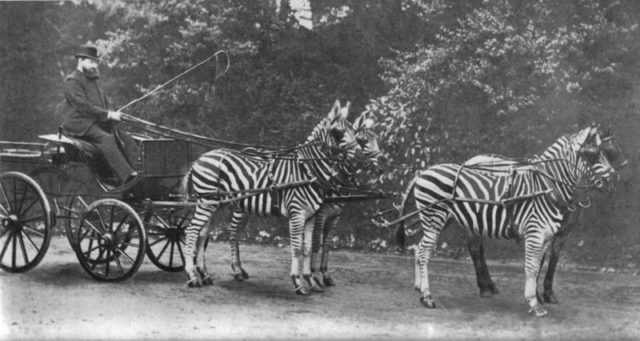Lord Lionel Walter Rothschild (1868 – 1937) loved animals. Many rich individuals splash their wealth about on cars or mansions or magnificent collections of antiques. But instead, Rothschild chose to spend his money on a private zoological museum.
Walter was heir to the immense Rothschild fortune. His father, the first Baron Rothschild and the first Jewish peer in England, was an immensely wealthy banker and politician.

He first showed an interest in zoology at the age of seven and declared then that he would have a museum dedicated to animals.
At his home in Tring Park, he had a number of exotic creatures including birds and kangaroos.
It was with reluctance that he went to work in his father’s bank at the age of twenty-one, dreaming of his museum. He was shy, and showed no ability in finance, but he persevered.
As encouragement and compensation, his forward-thinking father set up the zoological museum he so dearly wanted.

Baron Rothschild sent an expedition across the world to find exhibits.
Nathan died in 1915 and Walter, the new Baron Rothschild, continued to grow his museum.
Before his death in 1937 he had collected 300,000 bird skins, 200,000 eggs, 2,250,000 butterflies, 30,000 beetles, and thousands of fish, reptiles, and mammals, owning the largest private collection of zoological specimens ever seen. The museum was open to the public.

Despite his shyness Rothschild was headstrong. He was intent on dispelling many of the myths about animals commonly held at the time. One of these was the idea that zebras were untamable.
He harnessed a team of zebras to a carriage and drove them to Buckingham Palace to prove this idea wrong, and he was often seen in the streets of London in a cart drawn by a single zebra.
On another occasion, he mounted the back of a giant tortoise, though probably to not quite the same acclaim.

In 1932, most of his bird collection was sold to the American Museum of Natural History to satisfy the blackmail demands of a former mistress. He left the rest of the collection to the British Museum in his will. The donation was the largest ever received by the museum.
The collection was however kept intact at Tring, and the Walter Rothschild Zoological Museum is officially a division of the Natural History Museum.
